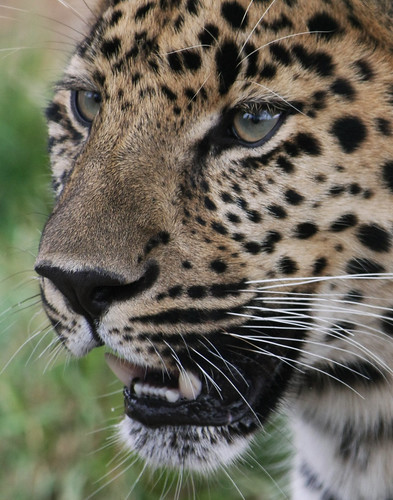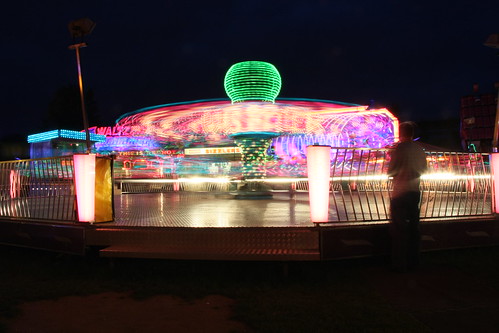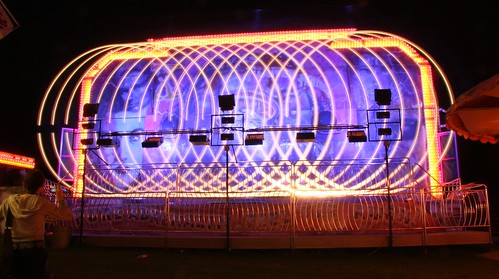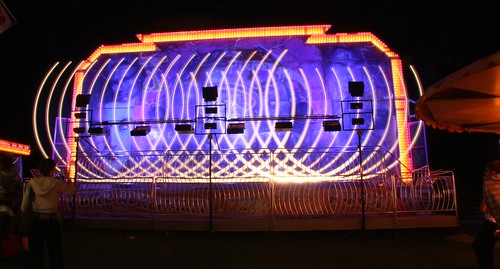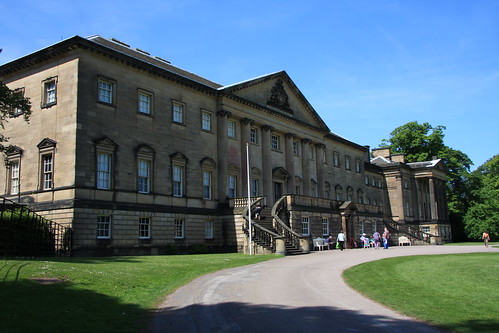The day was taking place at the Wildlife Heritage Foundation in Kent. A charity which is UK based who are working hard to ensure that the big cat species of the world are protected from extinction. They are an active partner in the European Endangered Species Breeding Programmes (EEP), as well as setting up education programmes for the people that share the habitats of these wonderful cats. The WHF is also raising awareness and funding for big cat projects around the world.
Having checked that I had a good supply of fully charged batteries and empty memory cards on the Friday evening I got all my camera equipment prepared for an early start on Saturday morning. Up at 6am to get ready before leaving home to travel down to Kent I was so excited about what the day would hold, I’d read such great reports from people who had previously attended the WHF I couldn’t wait to get there and experience it for myself.
After a nice easy drive I arrived at my destination in plenty of time and grabbed myself a drink from the refreshments tent. I met up with a few other members of the Talk Photography forum and introduced myself to a few of them who had already arrived, I was also asked to sign an indemnity form and read through the safety guidelines – basically I was signing away my life, if I got eaten it was all my fault! Once everyone was in attendance we had a short safety briefing – do not put fingers through the bars (really?) do not poke the animals etc seemed like common sense to me but we all know that not everyone has that in abundance!
We would be shown around the centre animal by animal and be given time to take plenty of photographs as we were there. The warden would give us information about each one and would answer any questions we had. First off we saw the Pallas Cats – these had a small head and a long tail. They look not very similar to a household cat in the face but have a lot of hair which comes out from their neck towards their face.

They have two Pallas Cats at the WHF Tula is female and Wei Shand who is male. The species is near threatened, it is unknown how many of these cats remain in the world but a lot of this species are killed by humans each year due to poison put down on farms as a side effect of rodent control. These little cats looked very cute but can actually be quite vicious; they have the most beautiful faces though.
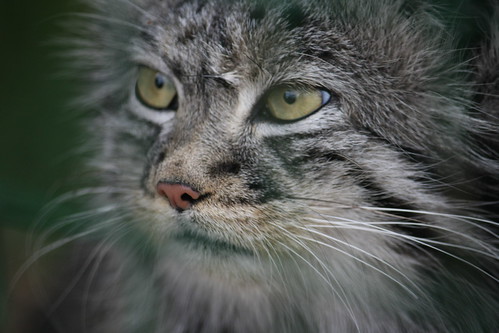 We then travelled to see the tigers. In total there are ten tigers currently residing at the WHF we visited Indy, Puna, Asu and Bawa who all share a very large enclosure. Indy is a hybrid tiger which means a cross breed (Bengal with Amur) and came to the WHF from Paradise Wildlife Park where she was hand reared in her early years.
We then travelled to see the tigers. In total there are ten tigers currently residing at the WHF we visited Indy, Puna, Asu and Bawa who all share a very large enclosure. Indy is a hybrid tiger which means a cross breed (Bengal with Amur) and came to the WHF from Paradise Wildlife Park where she was hand reared in her early years.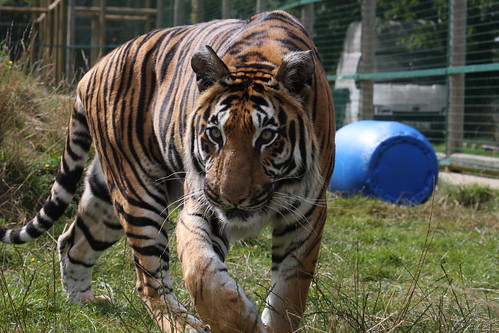 Puna is a Sumatran tiger, the smallest of the species and came to the WHF from Heidelberg Zoo where she had been hand reared. When she arrived at the centre she had forgotten how to be a proper tiger and so she was housed with Indy in the hope she would pick up the animal instincts she would naturally possess in the wild. Puna is playing a vital role in keeping the gene pool of Sumatran Tigers alive in captivity as an active member of the breeding programme along with Nias who she is paired with – they successfully produced two cubs in 2008.
Puna is a Sumatran tiger, the smallest of the species and came to the WHF from Heidelberg Zoo where she had been hand reared. When she arrived at the centre she had forgotten how to be a proper tiger and so she was housed with Indy in the hope she would pick up the animal instincts she would naturally possess in the wild. Puna is playing a vital role in keeping the gene pool of Sumatran Tigers alive in captivity as an active member of the breeding programme along with Nias who she is paired with – they successfully produced two cubs in 2008.Asu and Bawa are the two cubs born at WHF in July 2008. At a year old they are almost the same size as their mother but still display the playfulness of cubs. It is hoped that once they reach 18 months Asu will be moved on to another facility to become part of their breeding programme. Unfortunately Sumatran tigers are critically endangered and may disappear within the next 10 years this is why breeding centres like this play such a vital role in the conservation of these magnificent cats.
The picture below shows just how tall the tigers are when they stand on their back legs – these are actually the smallest types of tiger but they still stand at a good height when they stand up like this.

Due to the sheer amount of breeds of big cats housed at the WHF I’m going to break my blog down into separate parts as I want to make sure I do each animal justice so my last section for today will be about the next species on our visit – the Amur Leopards.
We saw four of the Amur Leopards on our visit – Artur and Xizi the breeding male and female and their two male cubs Argun and Anuy who were born at the WHF in October 2008. Artur has to be kept in a separate enclosure to his mate and offspring as if he was to be placed in the same pen his natural instinct would cause him to try and kill the two cubs.
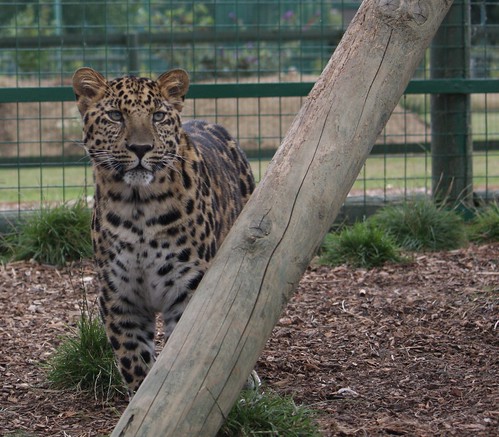
The Amur Leopards are the world’s most endangered species of cat and this breeding pair are at the fore front of the conservation work at the WHF. It is estimated only 35 Amur Leopards remain in the wild and it is envisaged that some of the off spring born in captivity under the EEP programme will be released into the wild in the future to try and stop them from becoming extinct.
One of the cubs was so absolutely adorable as he made a little squeaking noise rather than a growl at times it was hard to believe that these animals are so deadly and dangerous. The keeper was able to feed Argun and Anuy through the cage and they even gave his hand a little lick though he said in a few months there will be absolutely no chance of him being able to do that…..funnily enough he didn’t try and feed Xizi by hand.

Even though Argun and Anuy are only 10 months old they are a good size and not much smaller than Xizi. This picture shows just how big their paws and the length of their claws – I certainly wouldn’t want to mess with any of these guys!
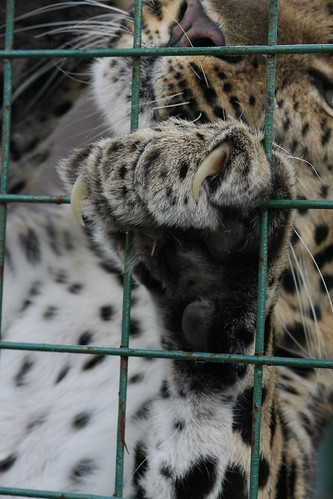
The Amur Leopards were stunning animals, the power in their bodies was spectacular and they are amazingly beautiful, almost mesmerizing. I certainly hope that the work being done by the WHF and the other centres in the European Endangered Species Breeding Programme can go some way to help protect them from extinction as it would be such a loss to the animal kingdom.
Many thanks as always for reading – all comments appreciated are most. I hope you will check back to read my next instalment once I have written it.
